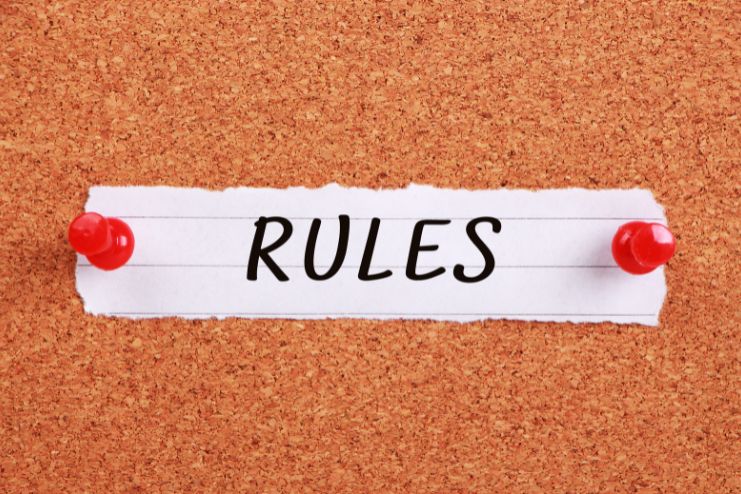It was supposed to be easy — just write down everything I eat. What’s the point?
That was my mindset when I started this seven-day food diary experiment. I wasn’t trying to lose weight or stick to any rigorous meal plan. This was simply about awareness of my daily habits, cravings, and decisions. There were no apps to count calories—just paper, pen, and a commitment to pay attention.
The strategy was simple: write down everything I ate, drank, or wanted. I was interested in knowing about emotional eating, sneaky snacking habits, and how my meals impacted my concentration and energy levels. What I found surprised me more than I could have imagined.
Why I Decided to Track My Eating
I was always interested in my eating habits, but never actually paid attention. Like most individuals, I questioned:
- Was I eating due to genuine hunger or mere emotion?
- How much of my eating was automatic?
- Was there a connection between what I ate and my mood?
The goal wasn’t to diet, restrict, or optimize. It was to establish mindful eating through basic observation.
How I Tracked (Method + Ground Rules)

When I decided to track my food for a week, I made a conscious choice to skip calorie-counting apps, portion measurements, and nutrition labels. This wasn’t about numbers—it was about noticing what I am eating. So, I kept it intentionally simple and analog, using a small notebook and sometimes snapping a quick photo with my phone.
Here’s exactly how I approached it:
- I wrote down everything I ate or drank, no matter how small or insignificant it seemed, including the single potato chip I grabbed while cooking, the leftover bites from someone else’s plate, and the sips of juice I took straight from the fridge. Every little thing went into the journal. Those “tiny things” often revealed the biggest patterns.
- Along with each entry, I included the time of day, what I was feeling emotionally, and my hunger level on a simple scale from 1 (not hungry at all) to 5 (very hungry). It helped me recognize when I was eating out of genuine hunger versus using food to cope with boredom, stress, or anxiety.
- There was no calorie counting, no macros. I didn’t care if a snack had 80 or 300 calories. What mattered to me was why I was reaching for it and how I felt afterward. Tracking made the exercise feel liberating rather than limiting.
- Most importantly, I approached it with curiosity, not criticism. I made a firm rule not to label my food as “good” or “bad” or feel guilty about my choices. This was about observing my eating patterns without shame or judgment—what many experts call nonjudgmental awareness, which is a key aspect of mindful eating.
I found that this method gave me a surprisingly detailed picture of my habits without overwhelming me with data. It was simple, honest, and deeply revealing.
Read More: How Your Gut Bacteria Affects Your Food Cravings (And How to Hack It)
Key Patterns I Noticed by Midweek

1. I Was Eating More Often Than I Thought
I wasn’t bingeing, but mindless munching crept in during the day:
- A handful of crackers while waiting for dinner to warm up.
- Chocolate to get through an afternoon slump.
- Munching while scrolling social media.
These small things mattered. Tracking helped me notice the sneaky, non-filling calories from habitual snacking.
2. My Hunger was Often Emotional, Not Physical
I figured I had pretty good control of my appetite. But monitoring pulled back the curtain: much of my eating had very little to do with physical hunger.
Stress had me reach for sugar, especially during the mid-afternoon or immediately after work calls. The immediate gratification that followed eating something sweet seemed like an easy fix for emotional stress.
Exhaustion led to carb cravings. On days when I was low on energy, I gravitated toward bread, crackers, or whatever “comfort” food took no effort.
In social gatherings, I simply ate to participate, not because I was hungry, but because eating was part of the social experience. Sometimes it was a second helping I didn’t need; other times, a dessert I hadn’t even been craving. It seemed minor, but over a week, it added up. Studies in Frontiers in Psychology validate that emotion, particularly negative emotion like stress or boredom, is a strong precipitant of unintentional eating (Van Strien et al., 2013).
3. I Skipped Veggies More Often Than I Realized
If you asked me before this experiment, I’d have told you that I eat vegetables “pretty often.” It turns out, “often” wasn’t as often as I believed.
Without even trying, my meals centered around carbs or proteins—sandwiches, eggs, and rapid stir-fries. Vegetables only found their way onto my plate if I planned for them. Most of my meals were colorless, fiberless, and the same, particularly on hectic days.
Seeing my food on paper (or in pictures) made it easy for me to identify the nutritional holes I typically ignored. It also helped me stay more mindful of portion control, not out of restriction, but because I noticed when key ingredients were missing.
Read More: Why Some People Can’t Digest Cruciferous Vegetables (and What to Do About It)

4. I Wasn’t Drinking Enough Water
This was the most straightforward observation—and, of all things, one of the most significant. I wasn’t consuming enough water, and I didn’t even know it.
Several times, I recorded snacks that most likely were a case of thirst disguised as hunger. The brain isn’t always a great discriminator between the two. On the days that I consumed more water, particularly in the mornings, I saw a difference: fewer cravings, improved concentration, and more consistent energy.
It was a subtle but significant change. Rather than reaching for food, I began to ask myself: When did I last drink water?
Hydration isn’t a revolutionary wellness trick, but monitoring made me realize how irregularly I made it a priority—and how much better I felt when I did.
Positive Changes That Happened Naturally
Without attempting to “be good,” things began to change:
- I ate more slowly at meals and found I was satisfied with less.
- I snacked less, simply by knowing my triggers.
- I prepared better and made healthier substitutions (e.g., fruit for chips).
- I felt more in touch with my meals, not just going through the motions.
This experiment was a subtle push toward mindful eating, a practice endorsed by Harvard Health.
Challenges I Faced

The road to journaling my food intake wasn’t easy. Here are a few challenges I faced:
1. It Got Tedious, Fast
Writing down all that I ate, particularly on hectic workdays, seemed like an added chore I didn’t always have time for. Occasionally, I’d forget to write something down in the moment and have to go back, which made me question whether I was recalling correctly. There were times when I wondered, Is this worth it? But I began to realize the discomfort was from the unfamiliarity of taking a moment to think, something I never did about food.
I discovered little hacks over time that worked, such as snapping a snap and then recording it later, or taking shorthand notes rather than whole sentences. The solution was to be consistent, not perfect.
2. I Judged Myself—Even When I Tried Not To
Even though I vowed to observe without judgment, old habits seeped in. I’d find myself saying to myself, Ugh, why did I eat that? or That’s too much sugar for one day. I was surprised at how reflexive voice worked.
What assisted was slowing down and reframing: It’s not about being “good” or “bad.” It’s about awareness. I cautioned myself that making food choices categorically only got in the way of knowing why I was choosing them.
3. Social Eating Was More Challenging
Sharing meals with others—whether dinner out with friends or a weekend family dinner—made it more difficult to track. I didn’t want to whip out my phone or journal in the middle of a conversation, and make a note of portions or ingredients from a restaurant menu that seemed too approximate.
Sometimes I entirely skipped logging those meals, but I paid attention to how I felt before and after: Was I eating in order to connect? Was I hungry? Did I feel full or merely socially obligated? That awareness was as important as the facts.
4. Some of my habits were tough to face emotionally
There were times when monitoring brought up unexpected emotions such as shame, defensiveness, and even sadness. I began to notice patterns, like how often I ate late at night to cope with stress, or how frequently I reached for sugar when overwhelmed. These weren’t easy lessons to learn.
But those were the most influential insights. Seeing those patterns allowed me to label what I was experiencing. It changed food from being an unconscious coping strategy to a cue that something else needed to be addressed, such as rest, connection, or boundaries.
Read More: Balancing Macronutrients: Crafting a Well-Rounded Diet for Optimal Health
What I’ll Keep Doing Going Forward

This wasn’t a one-and-done thing. Here’s what will continue:
This week was not an experiment that was happening just once—it sowed the seeds of small, sustainable changes I want to retain. Not because I “should,” but because they made me feel more connected to my body and decisions. Here’s what’s continuing:
1. Mindful Eating During Stress:
One of the most surprising takeaways was discovering how frequently I ate simply because I was overwhelmed, not because I was hungry. That mid-day snack craving? It usually arrived immediately after an onslaught of emails or a stressful meeting. Now, I’ve begun to pause and ask myself: Am I grabbing food, or do I just need a breath and a reboot?
At times, simply standing up and stretching or having a sip of tea made the craving go away. Other times, I still decided to eat—but with intent, not on autopilot. That one-question delay—”What am I hungry for?”—is something I’ll keep applying.
2. Meal Planning with Intention:
I also saw how easy it was for vegetables to get left out unless I specifically put them in. So now I’m changing the way I make my meals: first, a fiber-dense veggie and some good protein as the foundation, and then putting carbs or additives around that. It’s not restriction—it’s about starting with what sustains.
For example, instead of throwing together a quick pasta bowl, I’ll sauté spinach and cherry tomatoes first, then add in pasta and protein. That small mental reframe, veggies first, has already made my meals more balanced and satisfying.
3. Weekly Food Journal Check-Ins:
Monitoring daily was overwhelming, but I enjoyed how it made me more aware of my habits. In the future, I will do a 1–2 day “check-in” journal per week. It’s just enough to notice any unconscious habits that are likely to creep back in, such as stress eating or missing breakfast.
Even a weekly mini food log can assist in getting my choices back on track without making eating a project. It’s a sense of being tuned in, rather than tuned out.
4. Hydration and Hunger Cues:
This one seemed simple, but it was life-altering: I discovered that thirst usually disguises itself as hunger. Now, when I get snacky, my go-to is sipping a glass of water and waiting a few minutes.
This simple habit—check thirst first—is one of the easiest and most effective tools I’ve picked up. It helps me respond to real needs instead of reflexes.
Read More: Dietary Guidelines for a Healthy Heart: Foods That Support Cardiovascular Health
Conclusion

This 7-day food diary challenge wasn’t about cutting anything out or being perfect. It was about paying attention. And through paying attention, I gained clarity. Tracking my food allowed me to see my triggers, understand my cycles, and be more mindful at the table. I noticed where hunger was genuine and where it was merely emotion disguised as hunger. And I saw that awareness is enough to begin to shift things—quietly and naturally.
It turns out, improving how you eat doesn’t always start with strict rules or massive changes. Sometimes, the biggest shift comes from simply paying attention. Not with judgment, but with genuine curiosity.
You can’t change what you don’t observe. Food journaling provided me with that clarity. Not to regulate what I eat, but to understand why. And that changed everything.
References
- https://www.mind.org.uk/information-support/tips-for-everyday-living/food-and-mental-health/
- https://pmc.ncbi.nlm.nih.gov/articles/PMC2849909/
- https://www.medanta.org/patient-education-blog/the-scary-truth-about-sugar-how-it-affects-your-childs-brain
- https://pmc.ncbi.nlm.nih.gov/articles/PMC2849909/
- https://www.thecenterformindfuleating.org/
- https://www.frontiersin.org/journals/psychology/articles/10.3389/fpsyg.2023.1265074/full
- https://pmc.ncbi.nlm.nih.gov/articles/PMC8485346/
In this Article
















